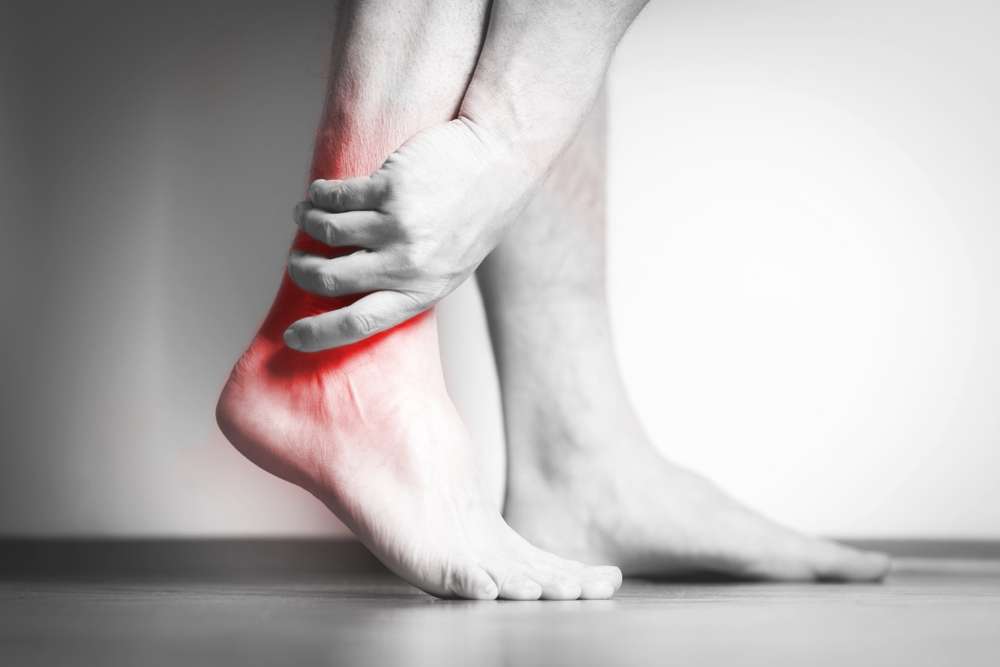Have you noticed a recurring pain in the back of your ankle? Do your movements seem to become gradually less fluid?
It is likely that you have Achilles tendinitis.
If the nature of your job requires repetitive movements or long hours on your feet, this inflammation is even more likely to be at the root of your discomfort.
Here are the top 5 symptoms of Achilles tendinitis.
1. Periodically recurring pain
Unlike bursitis, which is defined by inflammation between structures of the musculoskeletal system, Achilles tendinitis directly affects the tendon.
The pain from this type of tendinitis is characterized by the following:
- It occurs near the heel or at the back of the ankle.
- It tends to manifest during and after movement.
- It is especially articulated when the foot is manipulated.
- It may appear as soon as the patient wakes up.
Initially, normal day-to-day activities such as walking, gardening, or climbing stairs may result in pain.
If neglected, the pain from your tendinitis can potentially become chronic and lead to even more serious problems.
2. Swelling in the tendon
Your pain may also be joined by a swollen tendon that further contributes to your discomfort.
The swelling usually occurs behind your heel or ankle.
You can try the following tips to help relieve the pain if your foot is too swollen:
- Apply a cold compress several times a day.
- Avoid putting weight on your feet to let them rest.
- Elevate the ankle with the help of a chair and a pillow.
Of course, if your tendon refuses to deflate and the pain does not subside, it is crucial to see your podiatrist so they can quickly tend to your tendinitis.
3. Stiffness
In addition to pain and swelling, Achilles tendinitis also often results in stiffness.
First, it tends to appear in the morning as a lack of mobility in your ankle and calf.
Later on, if the tendinitis is not properly treated, the stiffness can become more serious as it will hinder your movement.
This stiffness manifests itself in several ways throughout your day.
Take for example:
- A lack of balance;
- Difficulty squatting;
- A limp;
- Difficulty going up or down the stairs;
- A lack of fluidity in your movements.
It is especially important to treat the last symptom of Achilles tendinitis because it can unnaturally modify your posture and gait.
The podiatrist will take into account the changes in the way you walk and propose solutions such as exercises, stretches, or foot orthoses as part of your treatment.
4. A bulky mass near the ankle
A bulky mass may develop from the fibers of the damaged tendon in addition to the swelling that is common in this form of tendinitis.
This symptom of Achilles tendinitis manifests later, appearing as a growth under the skin.
You may eventually come to notice that the affected tendon is much larger than the healthy one.
5. Difficulty walking
Put together, symptoms like sharp pain, stiffness, and swelling, will naturally prevent you from using your feet and moving around at full capacity.
Pair it with the changes to your posture, and your movement difficulties can start to seem more and more forbidding.
This is why it is important to quickly see a podiatrist, as they will help you to avoid many of the discomforts associated with untreated Achilles tendinitis.
PiedRéseau: detecting and treating your Achilles tendinitis symptoms
If any of those 5 symptoms of Achilles tendonitis seem familiar, it is crucial that you see your podiatrist as soon as possible.
PiedReseau podiatrists are certified to analyze your pathology and offer you personalized treatment anywhere in Quebec.
Consult your podiatrist now; don’t wait until you can barely get around.

